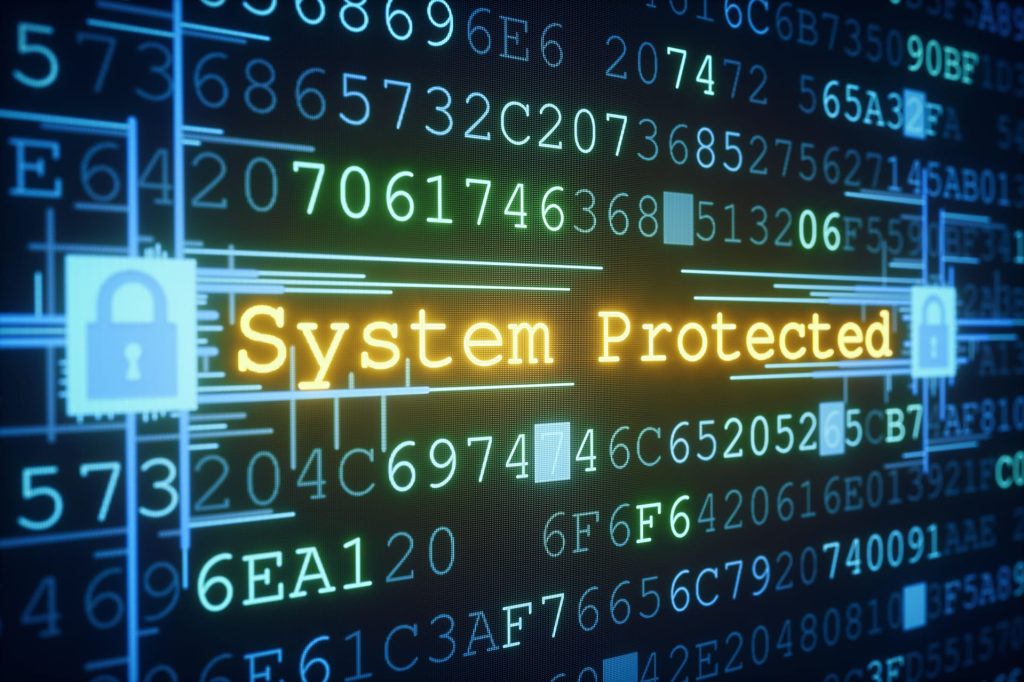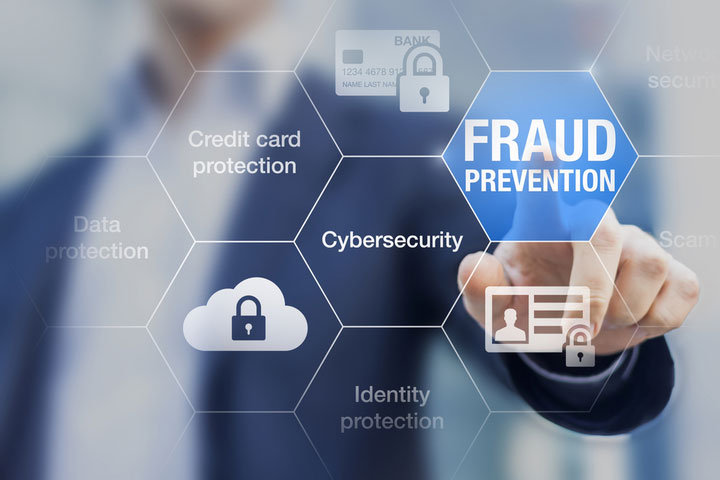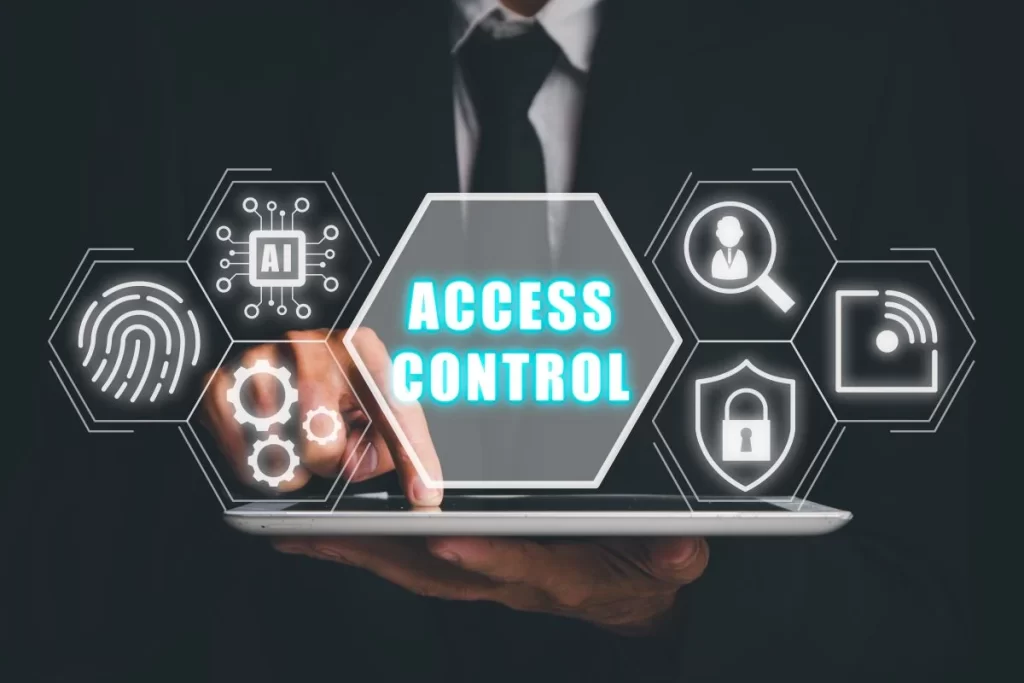Technology
-
Stay Protected, Empowered, And Free With Mega Darknet Access
Mega Darknet Access offers a gateway to a secure and unrestricted digital environment, empowering individuals to explore, communicate, and transact with confidence. This powerful platform is designed not only to shield users from prying eyes but also to provide them with the tools needed to thrive in a world where online liberties are constantly under threat. The internet, while vast and full of potential, has become increasingly compromised. Governments, corporations, and cybercriminals all compete to monitor, manipulate, and monetize user data. From social media tracking to targeted advertising, every click, like, and purchase can be traced. In this landscape, true digital autonomy seems elusive. That is where Mega Darknet Access becomes essential. It acts as a protective layer, hiding your identity, encrypting your communications, and allowing you to operate freely without constant oversight.
Whether you are a privacy advocate, a researcher, or just someone who values their online safety, this access gives you the control you deserve. But Mega Darknet Access is not just about protection it is about empowerment. It provides access to uncensored information and communities that value freedom of expression. For journalists, activists, and whistleblowers operating under oppressive regimes, this can be a lifeline. It allows them to share truth, seek resources, and connect without fear of retaliation. For everyday users, it is a way to escape the echo chambers and algorithmic manipulation that dominate mainstream internet platforms. Instead, they can discover a more open, diverse, and authentic digital experience. Security, of course, remains a cornerstone of Mega Darknet Access. The platform leverages cutting-edge encryption protocols, decentralized networks, and anonymity tools to keep users safe.
It minimizes the risk of identity theft, malware, and cyber-attacks common threats in the open web. Additionally, it provides access to privacy-enhancing tools and resources, including secure marketplaces, forums, and communication platforms. Users can also benefit from expert guidance on how to navigate the darknet responsibly and ethically, ensuring that their activities remain safe and legal. Ultimately, Mega Darknet Access is about reclaiming the digital space for individuals. In a world where tech giants and surveillance states dominate the narrative, it offers an alternative one rooted in freedom, autonomy, and respect for privacy. It reminds us that the internet does not have to be a tool of control; it can be a platform for empowerment. With Mega площадка Access, you do not have to choose between being protected and being free you can have both. So take control of your digital life.
-
How to Ensure Accurate Scale-Up with Laboratory Glass Reactors
Ensuring accurate scale-up with laboratory glass reactors requires a systematic approach that considers key process parameters, material properties, and reaction kinetics. One of the primary challenges in scale-up is maintaining the same level of mixing efficiency and heat transfer as in smaller laboratory settings. The reaction conditions in a small-scale glass reactor must be carefully analyzed and replicated in larger reactors to avoid inconsistencies. Factors such as temperature control, stirring speed, and reactant addition rates should be optimized to ensure uniform reaction conditions during scale-up. Heat transfer is a critical factor in scaling up reactions involving laboratory glass reactors. Since heat dissipation rates change with reactor size, ensuring efficient heat management is essential to prevent localized overheating or cooling, which can lead to undesired side reactions. Using jacketed reactors and appropriate thermal fluids can help maintain the desired temperature range. Additionally, understanding the exothermic or endothermic nature of the reaction allows for adjustments in cooling or heating capacities as the reactor size increases.

Mixing and mass transfer also play a significant role in successful scale-up. Laboratory glass reactors often provide excellent mixing due to their small volume, but this efficiency can be lost when moving to larger systems. The impeller design, stirring speed, and reactor geometry must be carefully evaluated to ensure proper mixing at all scales. Computational fluid dynamics CFD simulations and scale-up experiments can help identify the best mixing strategies, reducing the risk of phase separation or incomplete reactions in larger reactors. Reaction kinetics must be thoroughly studied before scaling up to ensure consistent reaction performance. Parameters such as reaction rate constants, Gwsi activation energy, and residence time should be determined through kinetic modeling. By understanding these variables, chemists can predict how reaction rates will behave at different scales and adjust operating conditions accordingly. Conducting small-scale experiments with variations in reactant concentrations and temperature can help refine kinetic models for better accuracy during scale-up.
Safety considerations should not be overlooked when scaling up laboratory glass reactors. Changes in reaction volume and pressure can lead to unexpected hazards, such as runaway reactions or gas evolution. Implementing appropriate safety measures, such as pressure relief systems, continuous monitoring, and fail-safe shutdown mechanisms, can mitigate risks. Additionally, ensuring that all materials used in construction can withstand the new operating conditions is crucial for long-term safety and reliability. A systematic scale-up approach that incorporates pilot-scale testing before full-scale production helps minimize potential issues. Using a stepwise increase in reactor size allows for identifying and resolving challenges at intermediate scales. Collaboration between chemists, engineers, and process specialists ensures a smooth transition from laboratory-scale experimentation to commercial production while maintaining product quality and process efficiency.
-
Discover the Incredible Potential of OMG Darknet Services for Online Safety
The internet has revolutionized how we connect, share, and conduct business, but it has also opened up new avenues for potential threats. As cybercrime becomes more sophisticated, protecting online privacy and security has never been more critical. A relatively unknown but increasingly valuable tool in this space is darknet services, which offer a range of features designed to enhance online anonymity and safety. These services are part of the hidden layers of the internet, inaccessible through traditional search engines, and are used to mask a user’s digital footprint. At the core of darknet services is the concept of anonymity. Users can connect to the internet without revealing their real-world identity, which is vital for those looking to protect their personal information. In a world where data breaches and identity theft are rampant, these services can be life-saving. They employ encryption techniques and routing methods that obscure your location and online activities, making it much harder for malicious actors or even governments to track your movements.

Moreover, darknet Omg сайт services play a pivotal role in securing sensitive communications. Whether you are a journalist working under repressive regimes, a whistleblower disclosing corruption, or simply a privacy-conscious individual, these services enable secure messaging without the fear of eavesdropping. The ability to communicate without surveillance is a growing need as threats to online freedom increase. These platforms allow individuals to share critical information while maintaining confidentiality, which is paramount in today’s digital age. Another advantage of darknet services is their ability to provide access to resources that may otherwise be restricted or censored. In countries with heavy internet surveillance and tight control over information, individuals can use these services to access a broader range of websites and information that would otherwise be unavailable. This is particularly important for users in regions with limited access to free expression or where certain online resources are blocked due to political reasons. The ability to bypass these restrictions offers a form of digital freedom that is highly valued by activists, researchers, and ordinary citizens alike.
Additionally, these services contribute to securing financial transactions. Traditional banking systems, while secure, are still vulnerable to various types of fraud and cyberattacks. Darknet services, by offering alternatives for online financial exchanges, provide an extra layer of security. By enabling the use of decentralized currencies and cryptographic protocols, users can engage in financial activities with greater peace of mind. This approach helps mitigate the risks of traditional payment systems, which can expose users to financial loss or fraud. However, it is important to understand that darknet services are not a perfect solution to all online safety challenges. While they provide enhanced privacy, they are not immune to all threats. Users must remain vigilant, employing additional security measures such as strong passwords, two-factor authentication, and keeping software up to date. Furthermore, the illegal activities often associated with the darknet can be a point of concern. Therefore, it is crucial for users to understand the ethical and legal implications of their actions when navigating these networks.
-
No More Waiting, No More Hassle – ChatGPT Plus Enhances AI Accessibility
ChatGPT Plus has ushered in a new era of accessibility, eliminating the frustration and delays traditionally associated with using AI-powered tools. With the introduction of this upgraded version, users can experience a faster and more reliable service, significantly improving their interaction with ChatGPT. This advancement is particularly beneficial for those who require more consistent access to cutting-edge AI technology for various professional, creative, or personal purposes. One of the standout features of ChatGPT Plus is its enhanced speed. While the free version of ChatGPT can often experience delays or downtime due to heavy usage, ChatGPT Plus users enjoy a much more efficient experience. This means that queries and tasks are processed more quickly, providing timely responses without the typical lag. For professionals or businesses using ChatGPT to streamline workflows, this faster processing time can make a significant difference, enhancing productivity and reducing the time spent waiting for results. Beyond speed, ChatGPT Plus also brings a higher level of reliability. While the free version may sometimes be unavailable or restricted during peak usage periods, subscribers to ChatGPT Plus enjoy priority access.

This means that even during times of high demand, ChatGPT Plus users can be assured of uninterrupted service. For businesses that rely on consistent AI assistance, this stability is crucial. Whether it is generating content, answering customer queries, or helping with data analysis, the uninterrupted flow of information allows users to maintain their operations without disruption. In addition to speed and reliability, ChatGPT Plus unlocks access to GPT-4, a more advanced version of the language model. GPT-4 offers more nuanced, coherent, and contextually aware responses compared to its predecessor, GPT-3.5. This upgrade enhances the overall user experience, making the AI not only faster but smarter, providing more accurate and detailed answers. This is particularly valuable for users in specialized fields such as law, medicine, or research, where accuracy and depth are paramount. With GPT-4, ChatGPT Plus users can expect more refined and insightful responses that align more closely with complex and nuanced queries. Moreover, اشتراك شات جي بي تي بلس ensures that users get access to more powerful tools and features, all bundled into one easy-to-navigate platform.
The subscription opens up a range of customization options, allowing users to tailor the AI’s behavior and responses according to their specific needs. Whether it is adjusting the tone, style, or detail level of the responses, ChatGPT Plus offers more flexibility for a wide variety of applications. Another important aspect is that ChatGPT Plus eliminates the frustration of facing usage limitations. Free-tier users are often capped on the number of prompts they can submit per month, but with the ChatGPT Plus subscription, users can access higher limits, making it an ideal option for those who need to engage with the AI frequently. This is particularly advantageous for those working on large-scale projects that require multiple interactions or for individuals relying on AI as a creative assistant. All in all, ChatGPT Plus not only enhances the AI experience but also elevates accessibility to new heights. With its combination of speed, reliability, advanced features, and the cutting-edge power of GPT-4, users can enjoy a more seamless and efficient interaction. The subscription-based service opens doors to a world of possibilities, making powerful AI tools available to anyone who needs them, when they need them.
-
Why Organizations are going to Darknet Answers for Security
In the present hyperconnected world, network safety dangers have become progressively modern, leaving organizations helpless against information breaks, ransomware assaults, and other malevolent exercises. Conventional safety efforts, while fundamental, are frequently inadequate to address the quickly advancing nature of these dangers. Thus, numerous associations are going to whimsical roads, for example, darknet arrangements, to reinforce their security foundation. It gives admittance to ongoing danger knowledge, empowering organizations to remain in front of cybercriminals. Through darknet observing devices, associations can recognize if delicate organization information, for example, login certifications or protected innovation, has been compromised. This proactive methodology permits them to relieve takes a chance before they grow into out and out breaks.

One explanation organizations are taking on darknet arrangements is the requirement for upgraded perceivability into the underside of the web, where cybercriminals frequently convey, plan assaults, and exchange taken information. By penetrating these discussions and commercial centers, network safety groups can accumulate significant experiences about arising dangers, weaknesses, and assault techniques. For instance, organizations can distinguish ransomware strains being created or phishing plans focusing on unambiguous enterprises, empowering them to likewise strengthen safeguards. Besides, Nexus link darknet arrangements offer an upper hand in ventures where client trust is fundamental. Information breaks can seriously harm an organization’s standing, bringing about lost business and legitimate repercussions. By utilizing darknet insight to prudently address weaknesses, associations show their obligation to strong safety efforts, upgrading client certainty.
This aggregate insight makes a more complete comprehension of the danger scene, enabling organizations to carry out additional powerful countermeasures. In any case, exploring the darknet requires wariness and mastery. The mysterious idea of this space can open organizations to tricks, bogus data, and, surprisingly, legitimate dangers whenever dealt with inappropriately. To relieve these difficulties, associations regularly collaborate with experienced network safety firms or convey specific devices intended to securely get to and dissect darknet content. As digital dangers keep on raising in recurrence and complexity, organizations are perceiving the essential worth of darknet arrangements. While not an independent solution to online protection challenges, they give a basic layer of guard in this present reality where remaining one stride in front of aggressors is basic. By embracing this flighty asset, ground breaking associations are reversing the situation in the fight against cybercrime.
-
Respond Faster and Easier with Twitter Reply Automation Tools
In the fast-paced world of social media, particularly on platforms like Twitter, the ability to respond quickly and effectively to customer inquiries and feedback is crucial for businesses looking to maintain a strong online presence. Twitter’s real-time nature means that users expect prompt responses, and any delay can lead to dissatisfaction or even loss of potential customers. This is where Twitter reply automation tools come into play, offering businesses an efficient solution to manage their interactions on the platform. These tools enable companies to automate responses to frequently asked questions, ensuring that users receive immediate answers without the need for manual intervention. By utilizing automated replies, businesses can streamline their customer service efforts, allowing them to focus on more complex inquiries that require human touch. One of the primary benefits of Twitter reply automation is the reduction of response times. Automated tools can handle a high volume of inquiries simultaneously, ensuring that customers receive replies almost instantly, regardless of when they reach out. This level of efficiency is particularly beneficial during peak times or crisis situations when the volume of messages can surge unexpectedly.

Additionally, automation tools often come equipped with features that allow for personalized responses based on the context of the interaction, thereby enhancing the customer experience even further. For instance, businesses can set up automated replies that acknowledge the customer’s query and provide relevant information or direct them to additional resources. Another advantage of using Twitter reply automation tools is the consistency they provide in communication. Automated X AI Comments can ensure that the messaging remains on-brand and aligns with the company’s voice, which is vital for building trust and credibility with the audience. Moreover, these tools often include analytics features that allow businesses to track engagement metrics and understand which responses resonate most with their audience. This data can be invaluable for refining communication strategies and improving overall customer satisfaction. Additionally, many automation tools offer integration with customer relationship management systems, allowing for seamless data transfer and a more cohesive approach to customer service across various channels.
However, it is essential to strike a balance between automation and human interaction. While automated replies can handle routine inquiries effectively, customers still appreciate and value human engagement, especially for more nuanced issues. Therefore, businesses should use automation as a complement to their existing customer service strategies rather than a complete replacement. By leveraging Twitter reply automation tools alongside human support, companies can ensure that they remain responsive to their customers’ needs while maintaining the personal touch that fosters loyalty. In conclusion, Twitter reply automation tools offer an effective means for businesses to enhance their customer service capabilities on the platform. By reducing response times, providing consistent messaging, and integrating with CRM systems, these tools can help companies manage their online interactions more efficiently. However, the key to success lies in finding the right balance between automation and human engagement, ultimately leading to a more satisfied and loyal customer base.
-
Mobile Forensics – Protecting Digital Evidence for Legal and Investigative Success
Mobile forensics has emerged as a critical field in modern legal and investigative work, playing a key role in both criminal and civil cases. As smartphones and other mobile devices have become integral to daily life, they now contain vast amounts of data that can serve as vital evidence in legal investigations. From text messages and call logs to GPS data and browsing history, mobile devices often hold crucial information that can be pivotal in solving crimes, determining civil liabilities, or uncovering digital misconduct. However, the process of collecting, preserving, and analyzing data from these devices while ensuring the integrity of the evidence is fraught with challenges. The first and most significant challenge in mobile forensics is the protection of digital evidence from tampering or loss. Mobile devices are designed for user interaction, and they constantly change as new data is generated and old data is overwritten. This makes the collection of data a time-sensitive process. Investigators must act quickly to preserve evidence before it is lost. Once data is collected, it must be safeguarded through proper forensic procedures to maintain its admissibility in court.
Forensic specialists use specialized tools and techniques to ensure that the data is extracted without altering the original content, preventing any question of contamination or mishandling during the analysis. One of the key principles in mobile forensics is the preservation of the chain of custody, which refers to the meticulous documentation of how the evidence was handled from the moment it was seized until it is presented in court. This ensures that there is no room for doubt regarding the authenticity or reliability of the evidence. Investigators must document every step of the evidence-handling process to prove that the data has not been tampered with or corrupted. In addition to preservation challenges, encryption and data privacy measures employed by device manufacturers can complicate mobile forensics.
While these measures are essential for user privacy, they also pose significant hurdles for forensic experts. Bypassing encryption and gaining access to locked devices often requires advanced expertise and, in some cases, legal authorization and learn this here now bali-grfurniture.com. This can slow down the investigation process, particularly in time-sensitive cases. Despite these challenges, mobile forensics professionals have developed increasingly sophisticated methods for overcoming encryption barriers while adhering to legal and ethical guidelines. In conclusion, mobile forensics is a highly specialized field that requires a careful balance between technological expertise, legal knowledge, and meticulous procedural discipline. Ensuring the integrity of digital evidence is paramount, as any compromise could undermine the success of legal or investigative outcomes. As mobile devices continue to evolve, so too must the techniques and tools used in forensic investigations to ensure that digital evidence remains a reliable pillar of justice.
-
Detect and Defend – Leveraging IP Address Checks to Identify Bots
In the realm of cybersecurity, the battle against bots automated programs designed to perform tasks at high speed has become increasingly crucial. Bots can range from harmless scripts performing routine tasks to malicious entities that carry out cyberattacks, data scraping, or fraud. One effective method for detecting and mitigating bot activity is through IP address checks, which offer a robust approach to identifying suspicious behaviors and protecting online systems. IP address checks involve examining the source of incoming web traffic to determine whether it originates from a legitimate user or a bot. By analyzing the IP addresses, security systems can identify patterns and anomalies indicative of automated activity. For instance, an unusually high volume of requests from a single IP address or a range of IP addresses can signal a bot attack, such as a Distributed Denial of Service DDoS attack, where multiple bots overwhelm a server with traffic to disrupt services.

One of the primary advantages of using IP address checks for bot detection is the ability to filter out malicious traffic before it reaches critical systems and view reviews for IPQualityScore fraud detection. Security solutions equipped with IP address verification can flag or block traffic from known malicious IP addresses, ensuring that only legitimate users gain access to the website or application. This helps prevent various issues, such as content scraping, where bots extract valuable information from a site, or credential stuffing attacks, where bots use stolen login details to gain unauthorized access. Moreover, IP address checks can be integrated into broader security frameworks to enhance overall defense mechanisms. By combining IP address verification with other techniques, such as behavioral analysis and machine learning, organizations can create a multi-layered approach to bot detection. This integration allows for more accurate identification of sophisticated bots that might try to mimic human behavior, making it harder for them to bypass security measures.
However, relying solely on IP address checks has its limitations. Some bots use rotating IP addresses or proxy servers to disguise their true origin, which can complicate detection efforts. Therefore, while IP address checks are a valuable tool, they should be part of a comprehensive security strategy that includes additional methods of detecting and mitigating bot activity. In summary, IP address checks are a vital component in the fight against malicious bots. By analyzing the source of web traffic, organizations can effectively filter out automated threats and protect their online platforms from various forms of cyberattacks. As bot tactics continue to evolve, integrating IP address checks with other advanced security measures will be essential for maintaining a secure digital environment.
-
Data Recovery Solutions – How Computer Forensics Services Address Complex Challenges
Data recovery solutions are essential for addressing the complex challenges that arise in computer forensics. When data loss occurs, whether due to hardware failure, accidental deletion, or malicious attacks, computer forensics services play a critical role in recovering and preserving data while ensuring that evidence is handled with the utmost integrity. These services are particularly crucial in legal contexts, where the accurate retrieval of data can impact the outcome of investigations and legal proceedings. One of the primary challenges in data recovery is dealing with physical damage to storage devices. Hard drives, SSDs, and other storage media can suffer from mechanical failures, which may render the data inaccessible. Computer forensics services employ specialized tools and techniques to perform physical repairs or to read data from damaged components. This often involves the use of cleanroom environments to prevent further damage during the recovery process. Technicians may disassemble drives and replace damaged parts to retrieve the data.
Another significant challenge is handling logical damage, where the data structure is corrupted, but the physical media is intact. This can occur due to software malfunctions, file system errors, or user errors. Forensics experts use sophisticated software tools to reconstruct corrupted file systems and recover lost or damaged files. This process involves analyzing and repairing file tables, partition information, and other critical data structures. In addition to physical and logical damage, data recovery in the context of computer forensics must address the complexities of encrypted and password-protected data. Modern encryption techniques can make data recovery exceedingly difficult, as the encryption keys must be located and used to decrypt the data. Forensic experts employ various methods to bypass or crack encryption, such as brute-force attacks or exploiting vulnerabilities in encryption algorithms. However, this process can be time-consuming and may not always be successful, depending on the strength of the encryption. Another challenge is dealing with deleted or overwritten data.
When files are deleted, they are often not immediately removed from the storage media but are marked as available for overwriting. How to Recover Data Forensics specialists use advanced recovery tools to scan for remnants of deleted files and reconstruct them. This process involves searching for fragmented data and piecing it together, which can be particularly challenging if the data has been overwritten multiple times. Furthermore, computer forensics services must ensure that recovered data is preserved in a manner that maintains its integrity and admissibility in court. This involves creating exact bit-by-bit copies of the storage media, known as forensic images, to work on during the recovery process. These images are used to ensure that the original data remains unaltered and can be used as evidence in legal proceedings. Lastly, the legal and ethical considerations surrounding data recovery are paramount. Forensics experts must adhere to strict protocols to ensure that data recovery processes comply with legal standards and respect privacy rights. This includes obtaining proper authorization before accessing or recovering data and ensuring that the recovered data is handled in a way that maintains confidentiality and prevents tampering.
-
Beyond Lock and Key – The Power of Modern Access Control
In the ever-evolving landscape of security, access control has transcended traditional notions of lock and key, emerging as a dynamic and powerful force in safeguarding physical and digital spaces. Modern access control systems go beyond the simplistic mechanical barriers of the past, embracing advanced technologies that redefine the way we manage and monitor access. The key to their potency lies in their adaptability, scalability, and integration capabilities. Unlike traditional locks, modern access control utilizes electronic credentials, such as smart cards, biometrics, or mobile devices, providing a multifaceted layer of authentication. This not only enhances security but also offers unparalleled convenience for users. The power of these systems extends beyond the physical realm, seamlessly integrating with digital networks to create a comprehensive security ecosystem. Cloud-based solutions enable remote monitoring and management, granting administrators real-time control over access permissions and security protocols.

One of the transformative aspects of modern access control is its ability to provide granular control over access privileges. Traditional lock and key mechanisms often operate on a binary system, either granting full access or denying it entirely. In contrast, contemporary access control systems enable administrators to fine-tune permissions based on roles, time, and location. This nuanced approach allows organizations to tailor access for different employees or visitors, reducing the risk of unauthorized entry and ensuring a more secure environment. Moreover, real-time updates and reporting features empower administrators with insights into access patterns, enabling swift responses to any suspicious activity. The integration of biometric authentication into access control exemplifies the cutting-edge capabilities of these systems and view the page https://southtexasss.com/access-control/. Fingerprints, retina scans, or facial recognition not only enhance security but also eliminate the need for physical credentials that can be lost or stolen. This not only streamlines the authentication process but also adds a layer of personalization and user-centric security. Additionally, the use of mobile devices as access credentials further exemplifies the adaptability of modern systems. Employees can seamlessly gain access using their smartphones, reducing the reliance on physical cards and minimizing the administrative overhead associated with issuing and managing credentials.
Beyond the physical realm, modern access control has become a linchpin in cybersecurity. With the increasing convergence of physical and digital security, access control systems play a pivotal role in safeguarding sensitive data and networks. Integration with identity management and cybersecurity protocols ensures a holistic approach to security, addressing both physical and digital threats. The ability to enforce access policies consistently across all facets of an organization enhances compliance with industry regulations and standards. In conclusion, the power of modern access control lies in its ability to transcend the limitations of traditional lock and key mechanisms. By embracing advanced technologies, providing granular control, and seamlessly integrating with both physical and digital domains, these systems redefine the paradigm of security. Beyond the mere act of granting or denying access, they empower organizations with a robust, adaptive, and comprehensive approach to safeguarding their assets and information in an increasingly complex and interconnected world.
